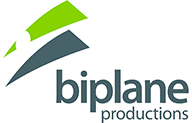179: How to Build a Brand When Your Auctions Vary Greatly in Value
This is the second of two posts about advertising strategies from resort areas. (Here’s the first one.)
—
I had about an hour to kill before a meeting with an auctioneer in Camps Bay, a bustling community wedged between the mountains and the ocean at the southernmost tip of Africa. So, I did what I normally do in vacation destinations: I stopped by a few real estate offices to look at their advertising.
Every listing there was significantly more expensive than my house back in the Blue Ridge Mountains, but there was a wide range of prices—from $500,000 to $15,000,000. Despite that disparity, there wasn’t a wide range of design from one listing’s advertising to the next or even from one agency’s materials to the next.
 The homogenous feel matched what I’ve seen in other resort or urban destinations but stood in stark contrast to what I’ve seen in the auction community.
The homogenous feel matched what I’ve seen in other resort or urban destinations but stood in stark contrast to what I’ve seen in the auction community.
Most auction companies book deals with a great disparity of values. And not just in real estate. Estates, business liquidations, and farm packages come in all shapes and sizes. So do their advertising campaigns.
Part of that makes sense, right? When a budget scales, why shouldn’t everything in the campaign get bigger and more expensive?
The answer to that question depends on what you’re trying to say to potential buyers and future sellers.
Uniformity makes your smaller listings look more valuable.
“Yeah, it’s easy when it’s luxury real estate,” you counter. First, tell that to a luxury asset broker. Second, proportions work regardless of the number of decimal places in the price. In Camps Bay, the top and bottom properties were separated by a factor of thirty. That means you can use this homogenous model, if you sell estates that range in value from $5,000 to $150,000 or farm equipment from $15,000 to $450,000 or real estate from $50,000 to $1,500,000.
Your biggest auctions won’t look shoddy, if they follow the consistent minimalism leveraged by premium global brands. Quite the contrary. Your small and medium auctions’ assets will look more valuable by association with your halo projects. That won’t go unnoticed by potential sellers of future small and medium auctions.
Trust a succinct first impression.
All advertising media apart from our website—our marketplace—should be treated as first impressions. It’s easier to have a premium and consistent advertising presence, when you simplify all advertising to the most intrinsic sales pitch and no more than a handful of supporting images.
Driving people to your website allows you to better track advertising response rates. After consistently collecting traffic data and comparing it to sales data, you’ll be better able to reach bidders and buyers and predict outcomes for future auctions—all because you forced yourself to say and show less with your first impressions. (One of my clients can predict within 5% the quantity of registered bidders his auctions will have based on Google Analytics the morning of his simulcast auctions.)
Consistency builds your brand more efficiently than fluctuation does.
If your brand’s impressions are inconsistent, the consumer either doesn’t connect current media to past ones they’ve seen; or they connect your brand with inconsistent asset values. So, that farmer on your mailing list who gets three different size postcards and two different-size brochures from you will wonder how you’d choose to advertise his assets, when it’s his turn to sell.
Also, buyers will assume the stuff crammed into small print media must not be valuable. Rather than send mail (or place newsprint ads) of different sizes or templates, distribute the exact same media layouts for every auction but to varying quantities of people (or different quantities of publication placements). Use Facebook’s Audience and Lookalike Audience tools to hit the folks you had to trim from direct mail.
Your advertising can grow cheaper.
If all your media requires just a few copy-and-pastes and a couple photo swaps, your pieces will become much cheaper to build. If in-house staff create your media, this saves you hourly wages and/or frees that staff to handle a wider bandwidth of projects. If you outsource, efficiency empowers you to negotiate lower design charges. You can spend that cost savings on professional photography or larger mailings or bigger Facebook audiences.
One of the reasons huge corporations overshadow small companies in advertising is that their wide reach forces them to simplify to consistent impressions. Simplification isn’t patented by big companies or luxury brands, and consistency doesn’t have to be expensive. If you want to grow your auction business or have more deals from which to choose, why not adopt some of that restraint?
—
Stock images purchased from iStockPhoto.com

















